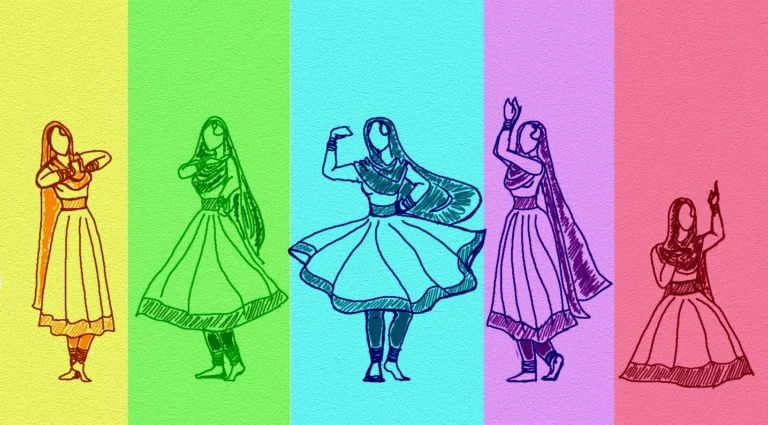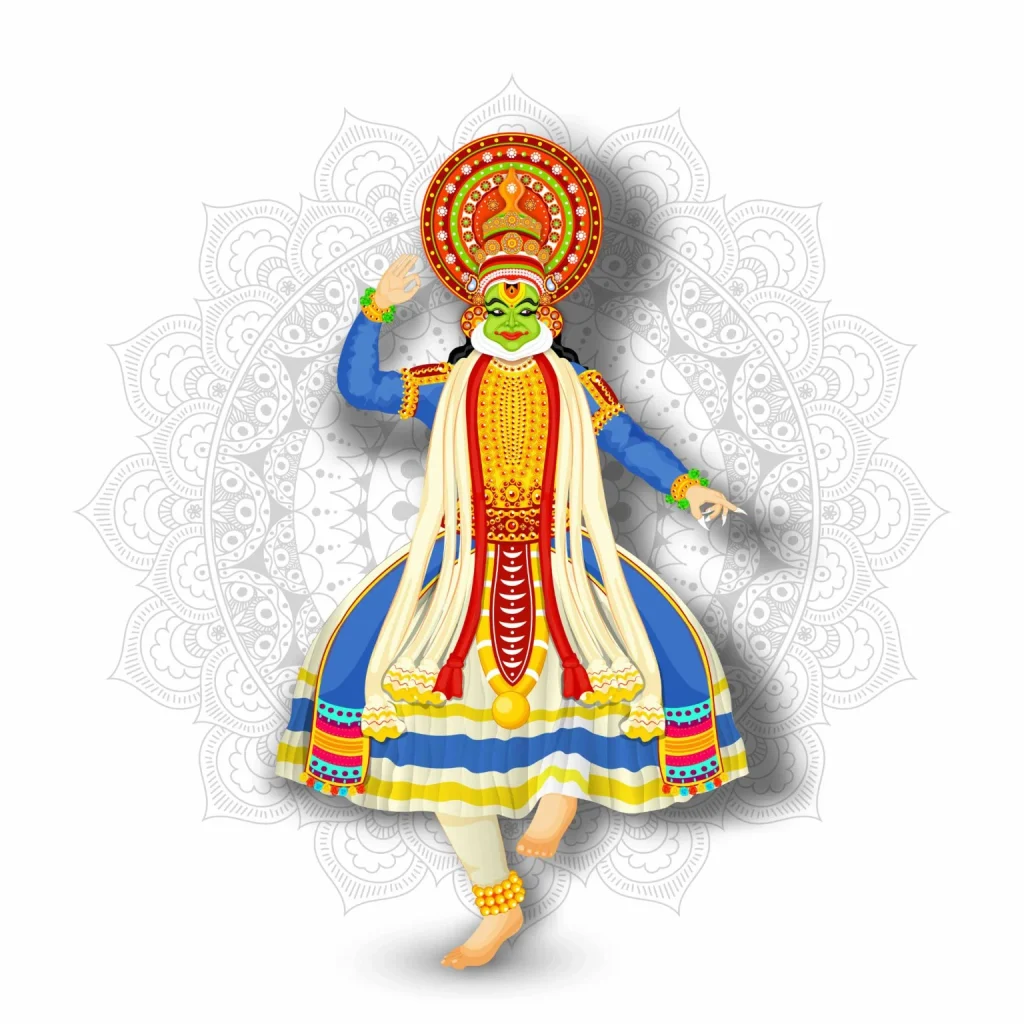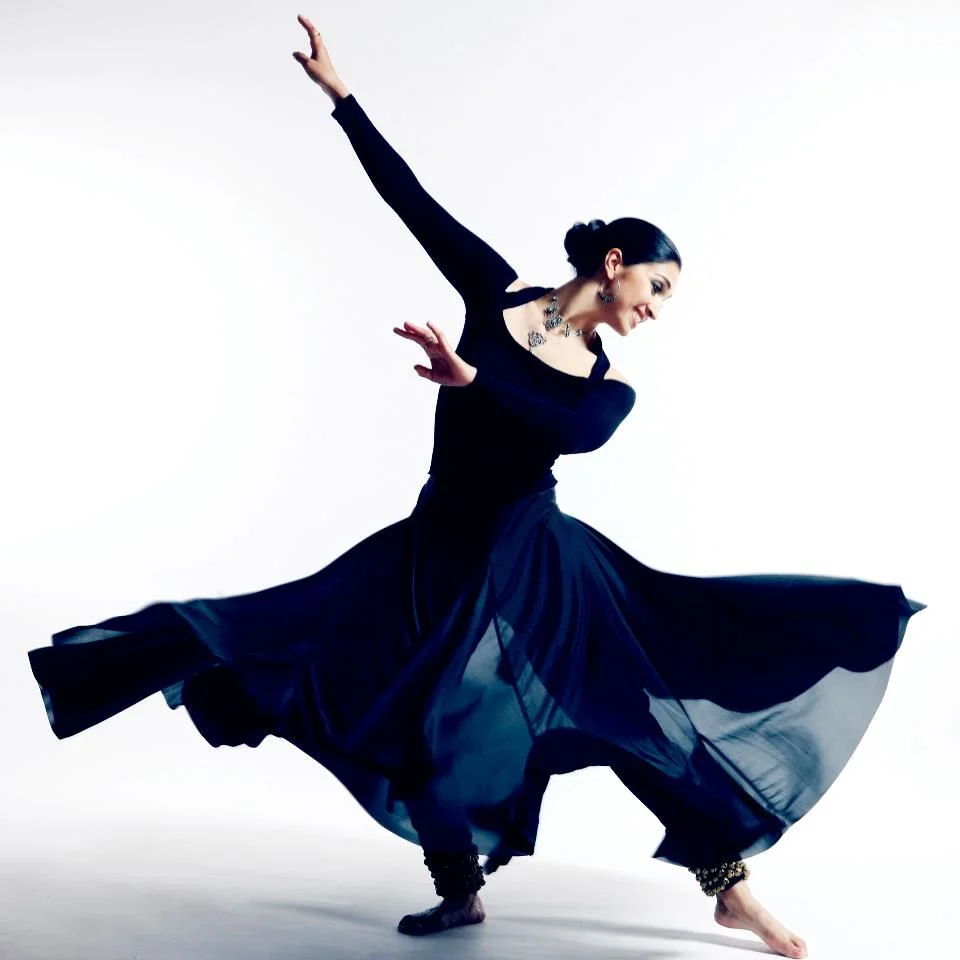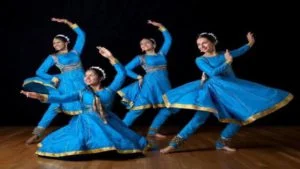
To learn Kathak , it is very important to understand a bit of history, the genesis and various elements of this dance form.
Kathak is one of the most significant forms of classical dances in India. The origin of this dance form happened because of the “kathakars” or the storytellers. The kathakars were mainly the composers or poets who travelled from the northern part of India.
The word “Kathak” has been derived from the Sanskrit word “Katha” means “story” and “kar” means “teller”. These wanderers depicted the great epics through the poems, the songs or the music.
This dance form also is traced back to the history of its origin from Hindu Sanskrit texts of the ‘Nritya Shastras’. This was written by Bharata Muni, who was an exquisite theatrical and musical person and originated between the 200BCE to 200BC.
Learning of the dance form involves a lot of steps and is not a very easy dance form. Moreover, this dance form is divided into various Gharanas which makes the understanding of this dance form more complex. The three main Gharanas of this dance form are the Lucknow Gharana, the Banaras Gharana and the Jaipur Gharana.
Learn Kathak
The learning of kathak is involved in the learning of the various elements i.e. steps, gestures, mudras, postures from her teacher or instructor. Each and every element, which involves the movement of the hand called the mudras or the hastas. The movement of the leg, the correct posture all prove equally important and relevant in this dance form.
To master, each and every step, needs special training, patience and hard work of the learner. Practice also constitutes one of the most important factors whereby the dance form must be practised each and every day at a fixed time. The understanding of the history in short by the student is also an important step of learning this dance form.
Learn Basic Kathak Posture
The basic posture of Kathak is also known as the Angas and mainly involves a very important part in giving the dance an aesthetic appeal and attractiveness. This involves mainly practising the body movements while keeping your body erect. The body in kathak needs to be properly aligned so that it helps in the controlled execution of the dance moves.
It is also done so that individuals do not hurt themselves while performing the dance moves. Firstly, the heels must be kept together while the feet should be kept apart from each other. The second part is the positioning of the knees which should always be in a straight line with the feet and the same goes for the hip area.
Lear Kathak Hand Gestures
The hand gestures involve the two kinds of mudras which is the Asamayukta which is performed with one hand. The other type is Samyukta hastas which are performed with both the hands. There are numerous mudras in Kathak combining both the Samyukta and the Asamyukta mudras. Some of the common mudras in Kathak are the Pataka, the Mudraakhaym, the Mushti, the Kartari Mukha and so on. These mudras are almost above 60 in number and need special attention and continuous learning.
The learning of mudras in a proper way helps to express the stories in kathak in a better way and also makes the audience get attracted towards the dance as they can connect to the dance in a better way.
Learn Kathak Footwork
Performing various foot movement in this dance form is hugely critical. The foot movements form the base of this dance form. The teacher teaches the footwork from slow ‘laya’ and it eventually increases to double, triple and also four times. The footwork is also known as “Taatkar” in Kathak.
The learning of the various foot movements in Kathak is one of the most challenging parts of learning this dance form. Like every other thing, it will need regular practice. Moreover, the incorporation of various “taals” and “laya” makes this dance form a bit difficult to master. These feet movement is done by wearing the ankle bells on the leg which gives a melodious sound.
Also read Differences between Kathak and Bharatanatyam
Learn Kathak Expressions
The learning of the expressions and expressing them in a proper manner makes a dance form exquisite and beautiful. These are called “Mukhaj Abhinaya” and play an important role in learning Kathak. As we know, Kathak represents the mythological stories through the dance in the form of a drama. This dance form involves the facial expression which may depict anger, sadness, happiness and so on. Without proper expression any dance becomes incomplete. The basic expressions must be inculcated and practised so that it can be put to proper use with the various dance moves.
Learn to combine all elements
The dance form involves learning and practising all the elements to give a proper and perfect dance form in Kathak. Kathak involves a variety of moves along with the music and the “taals” and various expressions in a proper way. Learning of these elements need a long time whereby the learner should have patience in learning this dance form.
Also read 5 Kathak Dance Masters You Need To Know About!
Benefits of Learning Kathak
The benefits of learning and performing Kathak should also be told to the learners since this may have a greater impact of making them learn this dance form.
- Kathak makes the muscles strong and the body fit and flexible.
- It also makes individuals represent the culture and heritage of India and learn in-depth about it.
- Kathak provides the amalgamated benefits of being stage free while performing and makes the individual more confident and self-reliant.
- It may also help in making your career a bright one as kathak forms a very vibrant career opportunity for individuals in the future.





